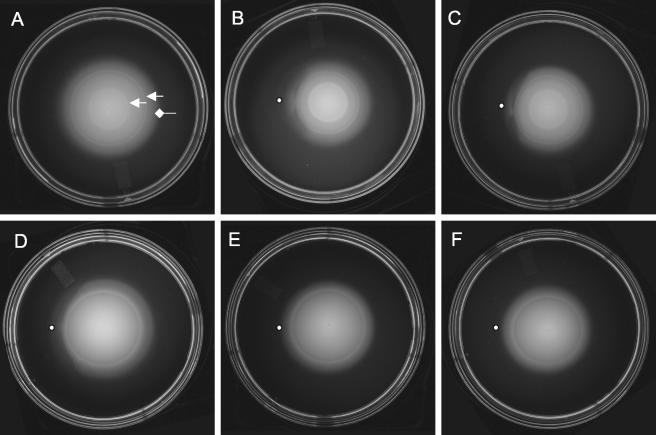FIG. 4.
Screening of putative attractant compounds using the qualitative chemotaxis assay. Chemotaxis behavior of TM1040 was assessed using BM glycerol motility agar on which a compound to be tested is placed (indicated by the dot to the left of the swimming colony). (A) Chemotaxis of Silicibacter sp. strain TM1040 through BM glycerol motility agar results in an ever-increasing colony of motile bacteria that is punctuated by one or more internal bands of bacteria (indicated by the arrows) and the periphery (diamondhead arrow). Shown is the response of TM1040 to DMSP (B), methionine (C), valine (D), arabinose (E), and fructose (F). In the presence of either DMSP, methionine, or valine, the outer ring is disturbed and becomes asymmetrical, indicating a chemotactic response from the cells. In contrast, neither arabinose nor fructose causes a change in the symmetry of the colony, suggesting that TM1040 does not respond to these compounds.

